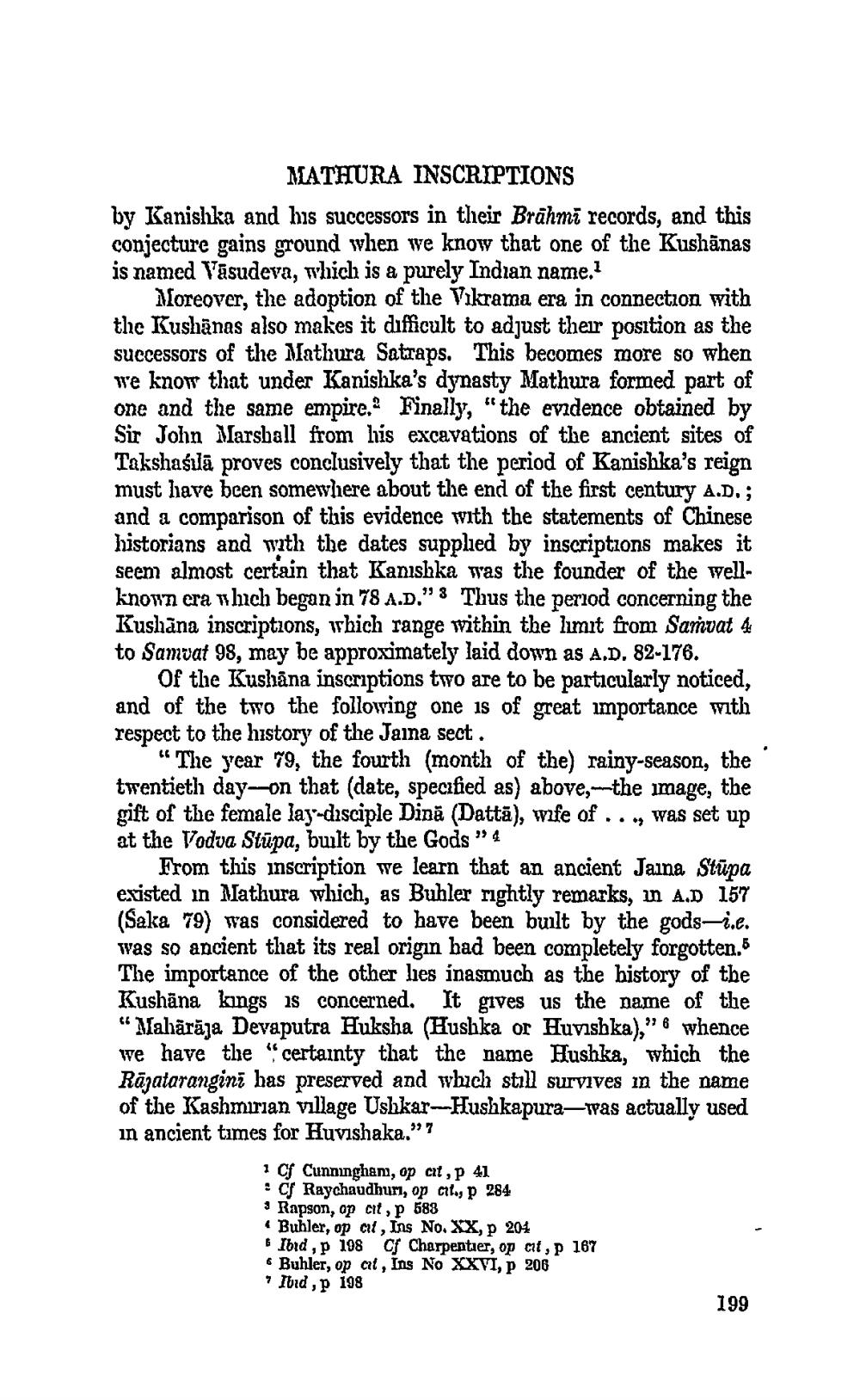________________ MATHURA INSCRIPTIONS by Kanishka and his successors in their Brahmi records, and this conjecture gains ground when we know that one of the Kushanas is named Vasudeva, which is a purely Indian name. Moreover, the adoption of the Vikrama era in connection with the Kushanas also makes it difficult to adjust their position as the successors of the Mathura Satraps. This becomes more so when we knot that under Kanishka's dynasty Mathura formed part of one and the same empire. Finally, "the evidence obtained by Sir John Marshall from his excavations of the ancient sites of Takshasila proves conclusively that the period of Kanishka's reign must have been somewhere about the end of the first century A.D.; and a comparison of this evidence with the statements of Chinese historians and with the dates supplied by inscriptions makes it seem almost certain that Kanishka was the founder of the wellknown cra which began in 78 A.D." 3 Thus the period concerning the Kushana inscriptions, which range within the limit from Samvat 4 to Samvat 98, may be approximately laid down as A.D. 82-176. Of the Kushana inscriptions two are to be particularly noticed, and of the two the following one is of great importance with respect to the history of the Jaina sect. "The year 79, the fourth (month of the) rainy season, the twentieth day--on that (date, specified as) above--the image, the gift of the female lay-disciple Dina (Datta), wife of ..., was set up at the Vodva Stupa, built by the Gods" From this inscription we learn that an ancient Jaina Stupa existed in Mathura which, as Buhler mightly remarks, in A.D 157 (Saka 79) was considered to have been built by the gods-i.e. was so ancient that its real origin bad been completely forgotten. The importance of the other lies inasmuch as the history of the Kushana kings is concerned. It gives us the name of the "Maharaja Devaputra Huksha (Hushka or Huvishka)," 6 whence we have the "certainty that the name Hushka, which the Rapatarangini has preserved and which still survives in the name of the Kashmirian village Ushkar-Hushkapura-Tras actually used in ancient times for Huvishaka."? 1 Cf Cunningham, op cit, p 41 : Cf Raychaudhuri, op cit., p 284 3 Rapson, op cit, p 583 Buhler, op cit, Ins No. XX, p 204 6 Ibid ,p 108 Cf Charpentier, op cit, P 167 Buhler, op cit, Ins No XXVI, p 206 * Ibid ,p 198 199




